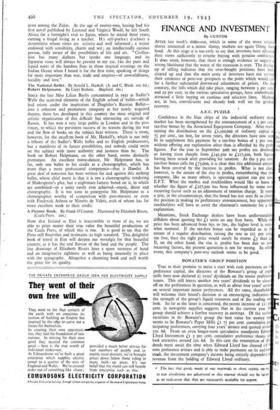The National Ballet. By Arnold L. Haskell. (A. and C.
Black. Kis. 6d.) Robert Helpmann. By Caryl Brahms. kBat,sford. 18s.)
SINCE the late Miss Lilian Baylis concentrated in 1931 at Sadler's Wells the scattered elements of the English school of ballet—which had arisen under the inspiration of Diaghilev's Russian Ballet— into a coherent and permanent company at her newly acquired theatre, there has developed in this country the most original and artistic organisation of this difficult but entrancing art outside of Russia. It has won a very large public in London and in the pro- vinces, to which the persistent success of its seasons during the war and the flow of books on the subject bear witness. There is room, however, for the excellent book of Mr. Haskell's, which is not only a hittory of the Sadler's Wells ballet and its English predecessors, but a manifesto of its future possibilities, and nobody could write on the subject with more authority and justness than he. The book on Robert Helpmann, on the other hand, seems distinctly premature. An excellent mime-dancer, Mr. Helpmann has, so far, only one ballet to his credit as a choreographer, which has more •than a mere professional competence—that is Hamlet. A great deal of nonsense has been written for and against this striking ballet, whose chief merit is that it is not a choreographic rendering of Shakespeare's play, but a nightmare fantasy based on it, in which are combined—in a unity rarely ever achieved—music, decor and choreography. It is too soon to panegyrise Mr. Helpmann as a choreographer worthy of comparison with past-masters or even with Frederick Ashton or Ninette de Valois, each of whom has far more excellent work to their credit.


























 Previous page
Previous page